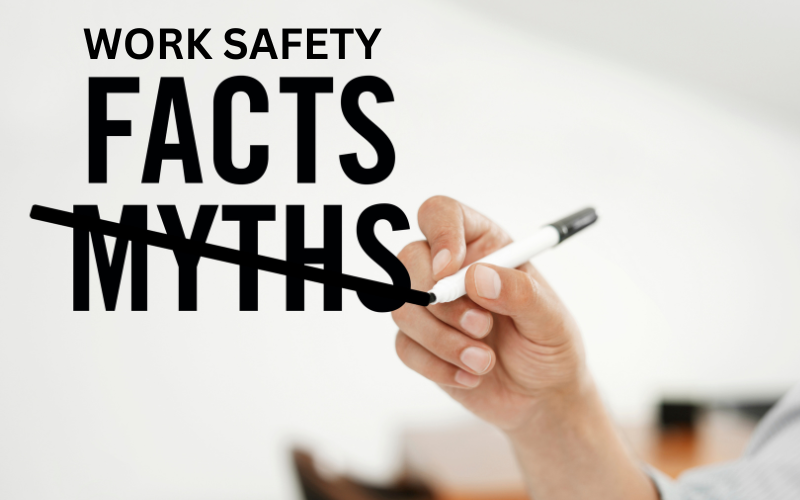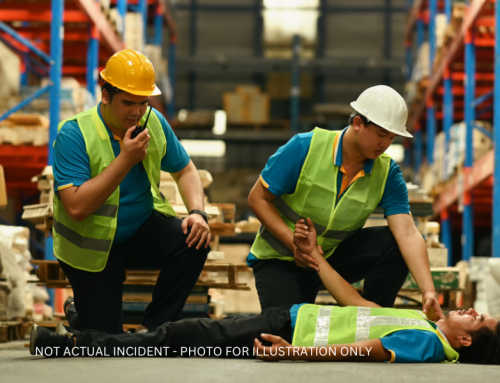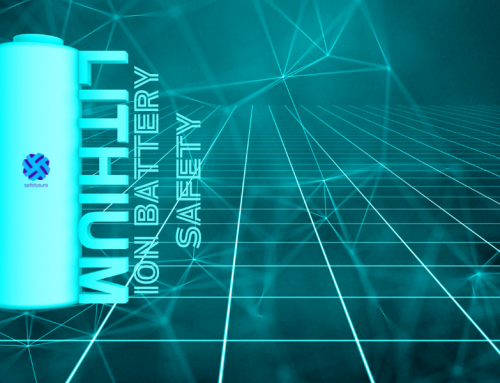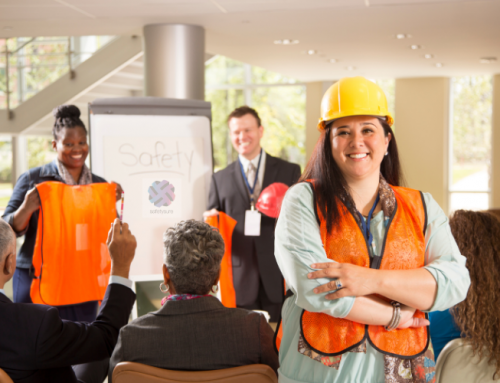Work health and safety practices and systems are an essential aspect of any business, aimed at ensuring the well-being and protection of employees and minimising disruption to the business. Numerous myths surround these safety practices, often leading to misinformed decisions and undermining the importance of workplace safety. In this article, we debunk eight common myths related to work health and safety practices.
Myth 1: Workplace accidents are unavoidable
Some people (including some business owners) believe that accidents are inevitable and part of the job. Some even believe that they’re simply caused by clumsy individuals in the workplace. This is simply not the case. Work-related accidents can be prevented by identifying hazards, implementing effective safety measures, providing adequate training, and promoting a safety-conscious culture within the organisation.
We have often heard that clumsy people solely cause accidents. This is an oversimplification that fails to account for the multifaceted nature of workplace accidents. Workplace accidents often result from a complex interplay of factors, including human, technical, organizational, and environmental elements. Attributing accidents to clumsiness oversimplifies the issue and diverts attention away from addressing the root causes. Here are some technical factors that contribute to accidents:
- Ergonomic design: Poorly designed equipment or work environments that do not consider human factors and ergonomic principles can increase the risk of accidents. These design flaws can cause strain or discomfort, resulting in reduced situational awareness, impaired cognitive performance, and, ultimately, accidents.
- Safety management systems: An inadequate system can contribute to accidents by failing to implement proper risk assessment, hazard identification, and control measures. A comprehensive safety management system should encompass hazard analysis, incident investigation, employee training, and continuous improvement processes to mitigate the risk of accidents.
- Human factors engineering: Human error can be influenced by factors such as mental workload, stress, fatigue, and distractions. Human factors engineering aims to minimize the likelihood of errors by designing systems, processes, and equipment compatible with human capabilities and limitations. Understanding and addressing these factors can reduce the risk of accidents, regardless of an individual’s perceived clumsiness.
- Process safety management: In industries involving hazardous materials or processes, accidents can result from failures in process safety management. This involves the systematic evaluation, design, and management of processes to prevent the unintentional release of hazardous substances or the occurrence of catastrophic events. Ensuring proper process safety management can mitigate the risk of accidents, irrespective of individual worker characteristics.
- Environmental and situational factors: Workplace accidents can be influenced by factors such as ambient temperature, noise levels, and lighting conditions. These factors can affect employees’ ability to perceive hazards, make decisions, and execute tasks safely. By addressing these environmental factors, the likelihood of accidents can be reduced for all employees, not just those who might be considered clumsy.
Myth 2: Safety is solely the employer’s responsibility
While employers are responsible for providing a safe work environment, employees also play a crucial role in maintaining safety. Employees should be actively engaged in safety practices, such as reporting hazards, participating in safety training, and following established protocols. Workplace safety is a shared responsibility between employers and employees.
Myth 3: Safety equipment is too expensive
Some businesses argue that safety equipment is too expensive and not worth the investment. However, the costs of workplace accidents, injuries, and illnesses can far exceed the expense of safety equipment. This includes costs associated with lost productivity, medical expenses, workers’ compensation, and potential fines or legal action. Investing in the proper safety equipment for your workforce is both a legal and moral obligation and a sound long-term business decision.
Myth 4: Complying with regulations guarantees safety
Compliance with safety regulations is a minimum requirement and should not be considered the ultimate goal. Regulations provide a framework for workplace safety, but businesses need to go beyond these guidelines by fostering a proactive safety culture. This involves continuous improvement, hazard identification, and open communication between employers and employees.
You might like to read about work health & safety obligations and how to manage them.
Myth 5: Small businesses do not need a safety program
Regardless of the size of the organization, safety should be a priority. Smaller businesses may have fewer resources and face different challenges but are not exempt from accidents and injuries. Implementing a safety program can help small businesses manage risks, protect employees, and maintain a safe work environment.
Myth 6: Work health and safety practices hinder productivity
Some people believe that strict safety protocols can slow down work processes and negatively impact productivity. However, a safe work environment contributes to increased productivity. Employees who feel safe and secure (and cared for) are more likely to be engaged, motivated, and efficient. Moreover, preventing accidents and injuries can save valuable time and resources in the long run.
Myth 7: New employees from trade backgrounds don’t need safety training
New employees, especially those with a trade background, are often considered competent when it comes to performing activities associated with their trade. However, they may be unfamiliar with the hazards and risks associated with their job at your workplace. They sometimes bring bad habits or practices from the workplace to your workplace making them ripe for work-related accidents in the new environment. Making assumptions about competence or skipping safety training for new employees can lead to accidents and injuries, potentially putting the entire workforce at risk. Proper competency-based training and orientation are crucial in ensuring that new employees understand their roles and responsibilities and are aware of the necessary safety protocols at your workplace.
Myth 8: If an employee gets injured, it’s their fault
Blaming the employee for an accident is a common misconception. In reality, accidents often occur due to a combination of multiple factors such as inadequate training, poor communication, or insufficient hazard controls. Assigning blame to the employee overlooks the root causes of the accident or incident and does not promote a positive safety culture. Employers should identify and address contributing factors to prevent future incidents at their workplace.
Dispelling these myths surrounding work health and safety practices is essential for creating a safe and productive work environment. Both employers and employees have a shared responsibility to maintain workplace safety and health. By understanding the importance of safety measures, investing in the right safety equipment, providing adequate training, and fostering a proactive safety culture, businesses can significantly reduce the risk of accidents and incidents, and protect their workforce and their reputation.
If you need help with any aspect of your work health and safety program, please call us on 1300 087 888 for a no-obligation chat with a work safety consultant.







Leave A Comment